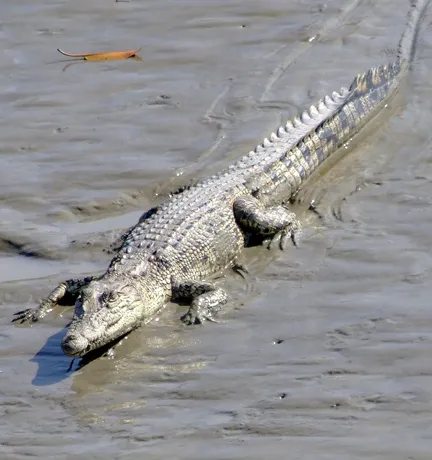Sundarbans National Park, India

The Sundarbans National Park site in India was inscribed on the World Heritage List in 1987. The site, located in the Ganges delta, contains the world's largest mangrove forest and hosts a number of rare and endangered species including tigers, aquatic mammals, birds, and reptiles. Mammals that frequent the tidal waters include Ganges dolphins (Platanista gangetica), Indo-Pacific humpbacked dolphins (Sousa chinensis), irrawaddy dolphins (Orcaella brevirostris), and finless porpoises (Neophocaena phocaenoides). Reptiles that use the park include olive ridley sea turtles (Lepidochelys olivacea), which nest in the park, green sea turtles (Chelonia mydas), and estuarine crocodiles (Crocodylus porosus), pictured here.
Today, over 40 World Heritage sites are listed for their marine values. Together, they can be considered the “Crown Jewels of our Ocean” and are recognized for their outstanding beauty, exceptional biodiversity, or unique ecological, biological, or geological processes. Learn more about this and other marine World Heritage sites.

